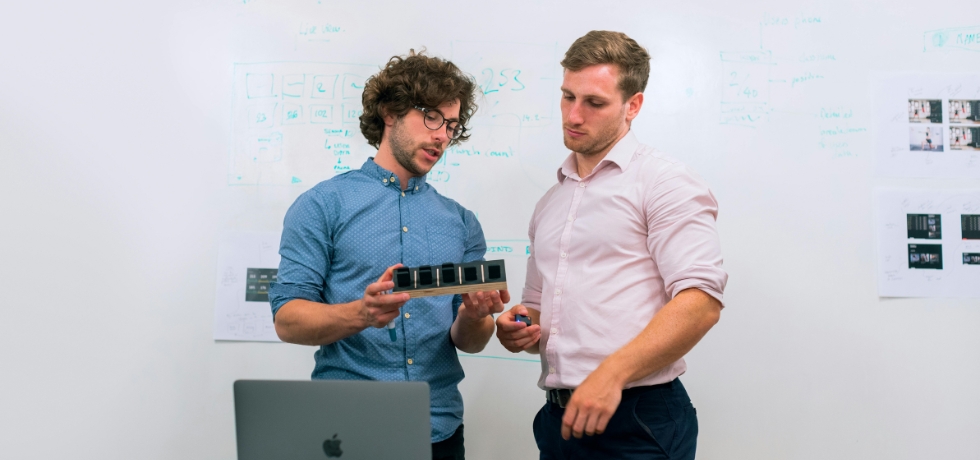Bringing a new product to market can be difficult. You know you have an idea that can add value to a target market, but you’re not sure how to get your product in front of that market.
If you’ve never done it before, this process can be especially difficult because you may not know where to begin. Fortunately, there is a blueprint in the new product development process, which is a strategy that will assist you in bringing your ideas to life. Continue reading to find out how it’s done.
Also Read: 6 Types of Demand Forecasting and Projection Benefits
Process of New Product Development
The process of bringing a new product to market, from brainstorming an idea to understanding if it fits into the market, ironing it out to prototyping to final commercialization, is referred to as new product development.
Although it can be a time-consuming process that sometimes necessitates iteration, it is all done to ensure that your product is as good as it can be before it reaches your customers and meets their needs in the best way possible.
Let’s go over the various stages of new product development
1. Concept Generation
The idea generation stage of the new product development process begins with brainstorming an idea (or ideas) that will help you solve an existing customer problem in a new and innovative way. It’s critical to have a solid understanding of your target market and the pain points they have that you want to solve when coming up with ideas to help you solve customer needs.
Your first stage of idea generation can be as simple as asking, “What if we did this?” During the research stage, they become more ROBUST.
2. Conduct Research
Following the development of a product concept, the next step is to conduct research to FLESH IT OUT. There are several steps you can take to accomplish this, including:
Market research to determine current sentiment in your industry and whether there are any gaps that your product will fill, as well as whether there will be demand for it.
Competitor analysis to determine whether customers believe your competitors’ products or services lack features that you can incorporate into your product to better meet the needs of your target market.
3. Organization
The third stage is planning, in which you develop a final product idea/definition based on your initial concept and research and begin making plans to bring it to life.
When you’ve defined your final product, you should start planning for what you’ll need to make it. For example, if you’re developing a physical product, you’ll need to source the necessary materials or find manufacturing partners.
4. Rapid Prototyping
During the prototyping phase, you create a sample product that is a mockup of what will be produced during mass production.
This prototype, also known as a minimum viable product (MVP), is a basic version of your tool, similar to your final product, that will help you get a sense of how it works and identify any areas that need to be improved.
Before you have a finalized prototype, you may create multiple prototypes and switch back and forth between this stage and the testing stage.
5. Evaluation
Before you launch your product, you must test it to ensure that it works as advertised and effectively meets the needs of your customers. During this stage, you will share your prototypes with target audiences and solicit actionable feedback on how the product functions.
Essentially, you want your product to be used in situations similar to real-world use cases so you can determine what works and what doesn’t. As previously stated, the results of your testing may necessitate going back and making changes to your prototype.
6. Product Creation
This stage entails developing the finished product, which will be commercialized once completed. You’ll use the feedback from testing your MVP to finalize your prototype and begin mass production.
Your product development process will most likely differ depending on your industry. If you’re a SaaS company, for example, your internal software development or programming teams will most likely be working to finalize code. If you make a physical product, you can outsource labor for specific components and assemble finished goods in your warehouse.
7. Commercialization
Commercialization is the final stage of your new product development process, in which you introduce your products to the market. This is the culmination of your brainstorming, research, and iteration, and it is the point at which your audiences can finally use what you created.
You’ll carry out your marketing strategies to make your target audiences aware of your new product and run campaigns to entice them to become customers.
From Brainstorming to Reality
When you finish your new product development process, you will have turned your brainstorming ideas into a real product or service that meets a customer’s need. If you are successful, you will have developed a valuable strategy that will allow you to continuously innovate and create new products, providing customers with the delightful experiences they desire.
Tags:
ConservationEnergy EfficiencyAuthor - Vaishnavi K V
Vaishnavi is an exceptionally self - motivated person with more than 4 years of expertise in producing news stories, blogs, and content marketing pieces. She uses strong language, and an accurate and flexible writing style. She is passionate about learning new subjects, has a talent for creating original material, and the ability to produce polished and appealing writing for diverse clients.
